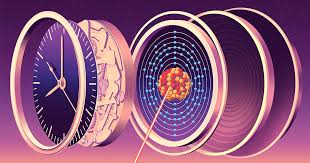Context:
Recently, a team of researchers working with cold Rydberg atoms has applied quantum magnetometry to improve the precision and robustness of atomic clocks and magnetometers.
More on the News:

- This development promises improved precision for applications in navigation, telecommunication, and aviation.
- The experimentalists achieved a tenfold (10x) increase in the response to magnetic fields, leveraging the Doppler effect to improve quantum magnetometry on thermal rubidium atoms at room temperature.
- This breakthrough was accomplished using Rydberg Electromagnetically Induced Transparency (EIT) in a room-temperature environment.
- Doppler-enhanced quantum magnetometry has potential applications in fields ranging from geophysics and brain activity detection to space exploration and archaeology.
- This research involved theoretical modeling and simulations with experts, showcasing a blend of experimental and theoretical physics to elucidate the observed phenomena.
What is Electromagnetically Induced Transparency (EIT)?
- Electromagnetically Induced Transparency (EIT) is a quantum phenomenon where an atom becomes transparent to a specific light frequency when exposed to two different light beams.
- This intriguing effect can slow down light pulses and even trap them within atomic media, enhancing various technological applications.
Various Versions of EIT:

- Three-Level Atomic Systems: EIT generally occurs in three-level systems, where two atomic transitions are influenced by weak probe and strong coupling lasers, leading to unique light-matter interactions.
- Quantum Interference: Similar to light interference patterns, atomic transitions can also interfere, causing specific energy levels to become less absorbent to certain wavelengths, resulting in transparency.
Implications and Future Directions
The findings from RRI not only bolster the capabilities of atomic clocks but also pave the way for future innovations in quantum sensing and communication. The researchers emphasize that their room-temperature approach could revolutionize how weak magnetic fields are detected in various fields, making advanced technology more accessible.

